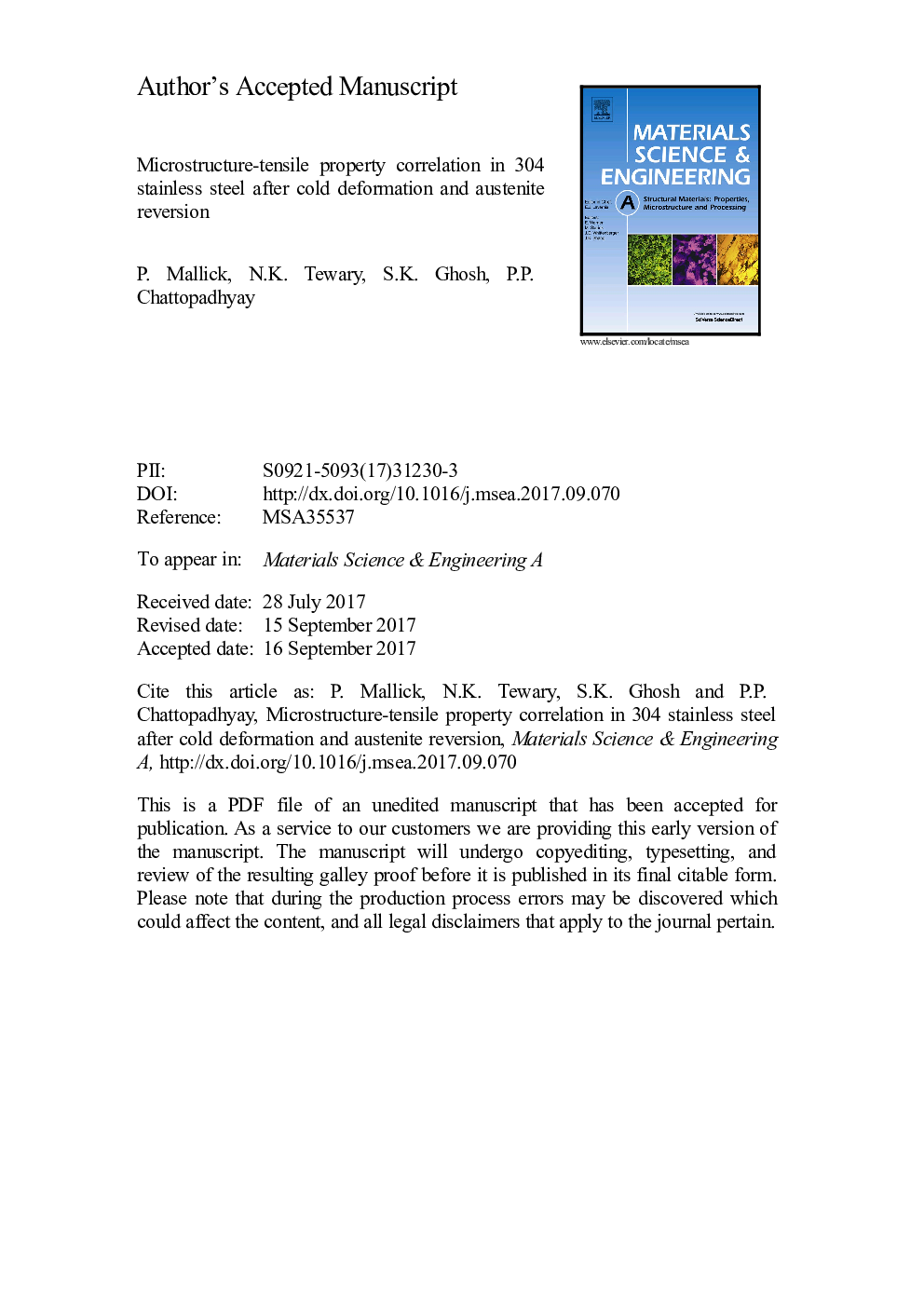| Article ID | Journal | Published Year | Pages | File Type |
|---|---|---|---|---|
| 5455257 | Materials Science and Engineering: A | 2017 | 38 Pages |
Abstract
The present study aims to investigate the evolution of microstructure of 304 austenitic stainless steel (SS) due to reversion annealing of cold deformed samples under different schedules. Evolution of phases in selected samples was identified and quantified by X-ray diffraction analysis along with corresponding microstructural characterisation through optical, scanning and transmission electron microscopy. Mechanical properties of the samples were determined by carrying out tensile test. Electron microscopy of selected samples has revealed that, while strain induced martensite, deformation twins, ε-martensite and high dislocated structures are the dominant microstructural features of the cold deformed samples, reversion annealing of the same results into ultrafine-grained reverted austenite, cell type dislocation sub-structures with some amount of untransformed martensite. The maximum tensile strength of 1589 MPa with an elongation of 9% has been obtained after 20% deformation at â196 °C (20LND), whereas 40% deformation at 0 °C (40ZCD) results into a tensile strength of 1225 MPa with 13% elongation. Annealing of 40ZCD and 20LND specimens at 300 °C results in significant improvement in tensile strength, while annealing at 725 °C increases the elongation with a decrease in tensile strength. During reversion annealing, strain induced martensite transforms to austenite through shear and diffusional processes. However, the reversion is essentially diffusional in nature at a higher temperature.
Keywords
Related Topics
Physical Sciences and Engineering
Materials Science
Materials Science (General)
Authors
P. Mallick, N.K. Tewary, S.K. Ghosh, P.P. Chattopadhyay,
